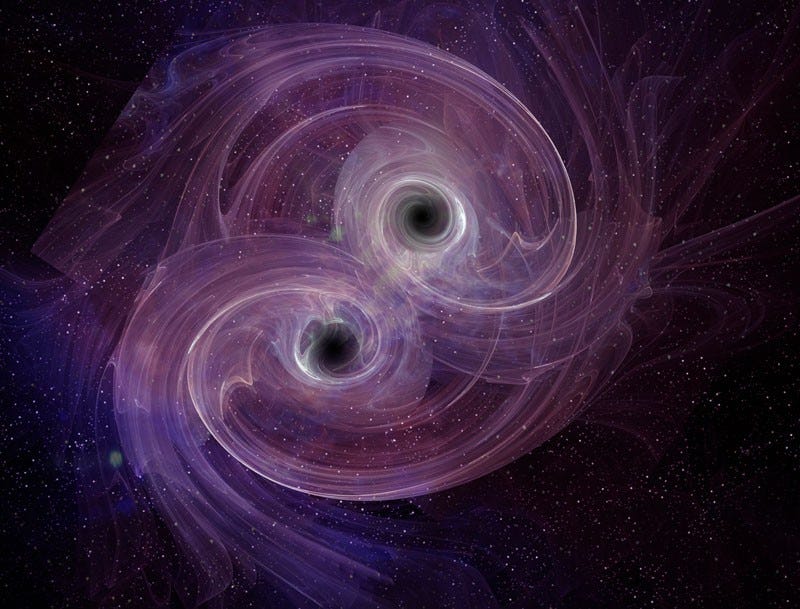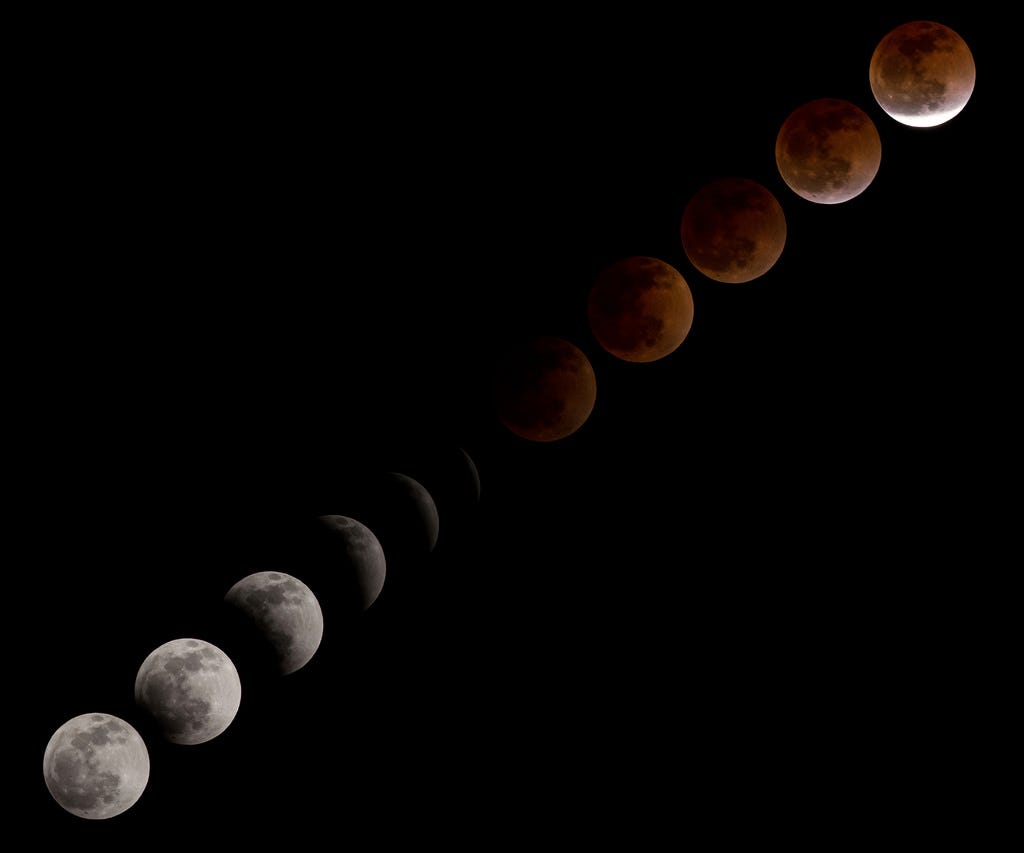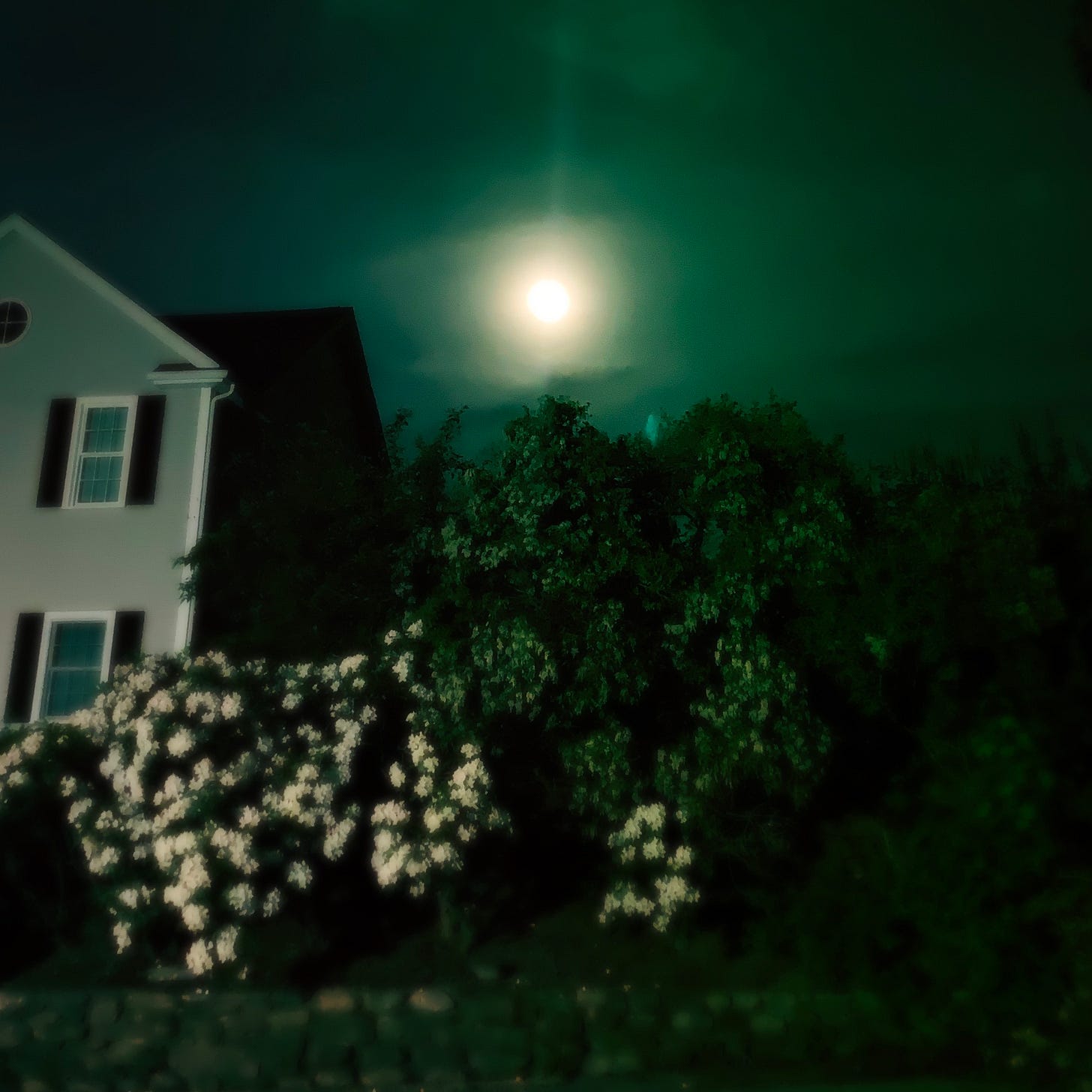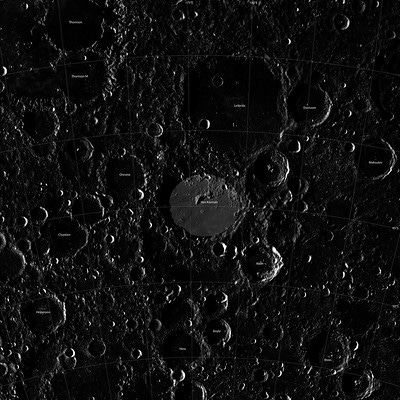Dear Lunatics,
A warning: this month’s newsletter may devolve into a long string of random letters, numbers, and symbols.
Don’t waste your time attempting to decipher the cryptic text.
Just know that I’ve fallen asleep with my face mashed against the keyboard.
If you’re like me, you stayed up to an ungodly hour last night to watch the Super Bowl of lunar events: the total super blood moon eclipse.
At 10:25 p.m., I sat on my front steps.
Soon, a shadow started to gnaw on the Moon’s left corner.
By 10:42 p.m., the Man in the Moon’s right cheek had caved in.
And by midnight, all that was left of the moon was a faint reddish blotch—like a spot of blood just beginning to seep through a fresh bandage.
The whole process was as slow and inexorable as an Edgar Allan Poe short story.
Maybe it was all the ants crawling over my bare feet, but I felt a little creeped out.
By 2:30 a.m., the Moon had returned, seemingly no worse for wear.
The show was over and I went to bed.
This morning, I awoke (groggily) to a snarky tweet from the astrophysicist Neil deGrasse Tyson:

This is the same celestial Scrooge who delivered the following message to children last Christmas Eve:


I may not have Dr. Tyson’s degrees, awards, or mustache, but I’d like to make a quick case for the worthy magic of the lunar eclipse.
The Moon is 400 times smaller than the Sun. By some incredible cosmic coincidence, the Moon also happens to be 400 times closer to the Earth than the Sun.
This serendipity makes the Moon and the Sun appear roughly the same size in our sky, which is the only reason we Earthlings see a total eclipse.
As I said in a recent interview:
The moon is drifting away from us at a rate of four centimeters a year, which is an agonizingly slow parting, but one that ensures future inhabitants of Earth will only ever see partial eclipses. I feel lucky to be alive during the brief moment in the history of the cosmos when these heavenly bodies align so impeccably. Gather ye total eclipses while ye may!
Even if Neil deGrasse Tyson can’t appreciate a lunar eclipse, he should at least show more respect for the Moon and its service record.
For over 4 billion years, the Moon has been acting as the Earth’s bulletproof vest.
The Moon guards our planet from a constant shelling of asteroids, meteorites, and comets.
And it has the scars to prove it.
The Moon’s far side is one of the most densely cratered surfaces in the entire solar system.
In fact, without the Moon, intelligent life—including Neil deGrasse Tyson’s—would not exist on Earth at all.
Like a good therapist, the Moon has been a stabilizing force on our planet. Without its gravitational influence, the Earth would have wobbled too far on its axis and plunged into either a perpetual deep freeze or a raging inferno.
So just how did our savior satellite come into being?
According to the prevailing scientific theory, the infant Earth slammed into a rogue planet, causing debris to hurl into orbit.
This debris eventually coalesced into the Moon.
Of course, not everyone buys this official story.
What if the Moon’s capacity to eclipse the Sun is no mere coincidence?
How could its dimensions be so perfect, so precise, just by chance?
According to the British writer Christopher Knight, author of Who Built the Moon?, the Moon was deliberately constructed as a scale model of the Sun and carefully placed into orbit to facilitate the growth of life on Earth.
So who built it?
Knight proposes three suspects: God, aliens, or us (in the future).
Since it’s impossible to disprove the first two, let’s explore the possibility that future humans traveled back in time and took a technologically advanced sledgehammer to the Earth to produce the Moon.
I have no doubt this theory (with its inherent time loop paradoxes) would irritate Dr. Tyson so much that he’d take a sledgehammer to the Hayden Planetarium.
But so what?
Even Dr. Tyson, in his latest documentary “The Science of Time,” admits that time travel to the past is theoretically possible.
If you travel in a particular path around two converging black holes, you can return to the past of where you originated your journey.

All of this is to say, it’s entirely possible that Santa Claus could deliver all those gifts in one night without annihilating his reindeer.
It’s also possible that Edgar Allan Poe was a time traveler, as many (including myself) sort of believe.
And if I could travel back in time to yesterday evening, I might actually be able to get a good night’s sleep.
But I think we all know that wouldn’t happen.
I’d just stay up and watch the eclipse again…
-WD
P.S. For Lunar Dispatch readers in Asia and Australia, don’t feel left out—your turn to see a total lunar eclipse will come on November 7th. Mark your calendars.
If you enjoyed this post, please consider subscribing (the newsletter is as free as looking at the Moon).
And if you already subscribe, please consider sharing this newsletter post with some friends. Thank you! 🚀
See you on the Strawberry Moon!









It was quite magical. The timing was sweet for me because it is my birthday today, so I was delighted to know that it was not only a full moon, not only a blood moon, not only a super moon, but also a lunar eclipse. What a combination! I felt very fortunate to see it. My twin sister lives in New York and she tried to see it but it was covered by clouds there. I hope Neil deGrasse Tyson sees your newsletter and it makes him smile.
You had me at ‘dear lunatics’! Glad to see you took on Tyson who seems to be a famous windbag. Like you, I love the moon. Thanks for the great read!